Japan Honeymoon
Welcome to Japan, one of the world's most fascinating destinations. Here you can find a perfect blend of the modern and traditional, where futuristic neon signs stand side by side with ancient temples. It's also one of the great foodie destinations, and from casual street food to elegant Michelin-starred cuisine, you will not go hungry!
March 7 - 10 | Tokyo | Mandarin Oriental
March 10 - 12 | Osaka | Conrad
March 12 - 16 | Kyoto | Hyatt Regency
March 16 - 19| Shima | Amanemu
March 19 - 20 | Tokyo | Mandarin Oriental
As March progresses, the temperature gets warmer, and days brighter. Towards the end of the month sees the arrival of cherry blossom season - although your dates are likely to be a bit early to experience this.
Expect temperatures to be hovering around 50° F.
In Japan, there is always a chance of rainfall, and it will be cool in early March, as well as in the early mornings & evenings. Pack accordingly!
If you would like to make any changes, reservations or cancellations - or for any emergencies - during your time in Japan, you can contact the following who will be your local contact during your trip:
If you need assistance, please contact:
A local contact will be provided
A local contact will be provided
You can also reach out to us on the scenset app and we will be happy to help!
US Passport holders do not need a visa to travel to Japan and can stay for up to 90 days.
Please click here for full details.
These guidelines are for reference only. Scenset holds no responsibility for travel restrictions. Travelers are responsible for ensuring the right documentation to travel.
As of October 2022, Japan has lifted the ban on entry and visa-free travel has resumed (where applicable).
A valid vaccination certificate (3 shots) or a negative Covid-19 test certificate (taken within 72 hours before departure) is needed to enter Japan.
Please click here for full details.
Masks are required indoors (hotels, trains, planes, subways, cars, buses, restaurants, shops, etc.) except when eating or drinking.
Outdoors, follow the local customs. Wear a mask if others are wearing them or if requested, for instance, at a temple or shrine. This is important and avoids putting your guide in a difficult position.
If outdoors and others aren't wearing masks, you may also choose not to wear one.
In general, tipping is not necessary in Japan. Guests do not have to tip restaurant staff, bellmen, taxi drivers, or housekeeping.
While not expected, guides and drivers will always appreciate a tip for their services. Amounts are not fixed, but any number beginning with 4 should be avoided for superstitious reasons (4 is pronounced the same as "death" in Japanese). Tips should be passed along in a plain, white envelope with no markings/ribbons on it.
Generally speaking, a certain amount per day for a guide, and a certain amount a day for a driver is sufficient.
Whilst in Japan, you may wish to utilize the Takkyubin luggage transfer service, which can be booked through your hotel concierge.
It works best between the major cities, and so you may wish to send your bags ahead from Kyoto to Tokyo, whilst traveling light to Amanemu.
Note: Please be sure to speak with the concierge in good time, so there are no delays. They will advise on the best schedule when it comes to sending your luggage.

We have designed a great playlist for you to enjoy before and during your trip to Japan!
- Japan is a curated selection of popular music from Japanese artists; straight off the streets of Tokyo!

If you're looking for some great Japanese movies to really get you in the mood for your trip, you may want to download for the flight:
- Tokyo Godfathers is an animated movie by the late anime auteur Satoshi Kon and is a touching love letter to the city of Tokyo.
- Adrift in Tokyo is filled with Japanese humour, plenty of cultural references and gentle moments; an enchanting examination of modern Japan through the streets of Tokyo.
- All About Lily Chou-Chou is a moving coming-of-age film documenting the struggles of two boys to cope with teenage life, while introducing the absurdity of Japan’s pop culture.
- Strawberry Shortcakes follows the ups and downs of four female friends in Tokyo looking for love and trying to cope with the responsibilities in their lives.
Meet your arrival assistant in the arrival area and move to your private vehicle. It is about a 90 minute drive to the greater Tokyo area, depending on traffic.
Driver
will be provided | will be provided
Greeter:
will be provided | will be provided
Booked by scenset.

One of the world’s most cutting-edge capitals, Tokyo is a city of contrasts. Famous for its sprawling neon-lit landscape it is also home to expansive parkland, peaceful shrines and temples, and lovingly tended gardens. On the surface, Tokyo is a mix of digital trends and conspicuous consumption, but dig deeper and you will find a city rooted deeply in the traditional culture. Shinto shrines and Buddhist temples stand close to skyscrapers as a reminder of a more contemplative time.

With its superb location in the city's prestigious commercial district, the first Mandarin Oriental hotel in Japan brings contemporary elegance to Nihonbashi, the historical and cultural center of Tokyo since the 17th century.
Situated within the top floors of a soaring new landmark, Mandarin Oriental Tokyo dynamically blends the best of past and future architectural splendor. The hotel has 157 guest rooms and 22 suites, some of the largest in Japan. The rooms' boundaries dissolve with an expanse of glass walling that gives onto endless views across the metropolis.
Mandarin Oriental
Deluxe Room
- Breakfast included

Today is yours to explore Tokyo at your leisure. Below you will find some suggested sites to explore.

In Shibuya one can witness (and experience) the world's busiest intersection, as well as one of Japan's most endearing symbols of loyalty - the statue of Hachiko.
The Shibuya scramble is located in the heart of Shibuya's shopping district. Due to its proximity with many popular stores, Shibuya Station, and the location of countless delicious eating spots, the intersection regularly sees thousands of people cross each time the traffic lights turn red and the pedestrian lights turn green.
Also located in Shibuya is the bronze statue of the dog Hachiko. Hachiko was well known for his loyalty in waiting for his master for nearly 10 years, arriving at the station daily in anticipation of his master's return from work.
Soon after, a statue was erected in his honor. Unfortunately the statue was melted down during World War II, but the current replica was commissioned shortly after.

Meiji Shrine was built nearly 100 years ago to commemorate Emperor Meiji’s contribution to modern Japan. The shrine is entirely surrounded by a forest, with an area of 70 hectares of land and over 120,000 trees, all of which were donated to the shrine from different parts of Japan.
Although rather young compared with other shrines, Meiji shrine has its own dramatic story to tell. While the original construction of the shrine was completed in 1926, the shrine was destroyed during the bombings of World War II and rebuilt in 1958.
If you’re lucky, you’ll spot a couple on their wedding day, making their way through the shrine’s grounds on their way to their ceremony.

Harajuku’s Takeshita Street - This narrow, crowded street is lined with shops that sell the latest fashion trend, sweets, and other interesting items. It is in this area that some of the outrageous fashion that Japan is known for originates.
As the trendy streets of Harajuku end, the amazing architecture of Omotesando begins. With seemingly endless modern, cutting-edge architecture, great shopping, and delicious restaurants, Omotesando is Tokyo’s Champs-Elysées Boulevard. Many of the buildings along this street were designed by Pritzker Prize winning architects such as Kazuyo Sejima and Ryue Nishizawa.

Kichijoji is a trendy neighborhood located just west of central Tokyo in the same area as Ghibli Museum. It is considered by many as the best neighborhood to live in in Tokyo. It offers a good balance of commercial business and nature, namely Inokashira Park, within a relatively small space.
There are three popular shopping areas in Kichijoji.
Sunroad
- Hours vary depending on shop, typically morning to evening
- The Sunroad Shopping Arcade is a single, covered shopping street that starts almost immediately north of Kichijoji Station. A wide variety of shops line both sides of the street, giving one a feel of being in a local neighborhood.
Harmonica Yokocho
- Hours vary depending on shop, typically late afternoon to late night
- Harmonica Yokocho (lit. harmonica lane) is named for its network of narrow lanes resembling the cross section of a harmonica. It is located immediately north of Kichijoji Station and crammed with dining establishments, bars and shops.
Daiyagai
- Hours vary depending on shop, typically morning to evening
- Daiyagai is a covered shopping street parallel to the station just beyond Harmonica Yokocho. The shops here offer a variety of goods from cooked food to daily necessities and fashion. One of the more popular shops is a butcher that sells cooked food on the first floor and has a wagyu steak restaurant on the second.
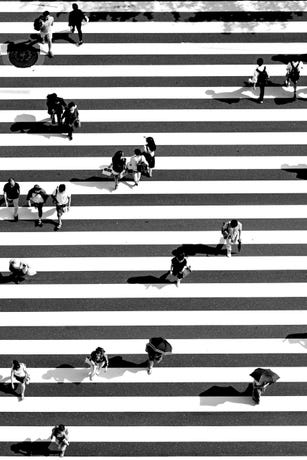
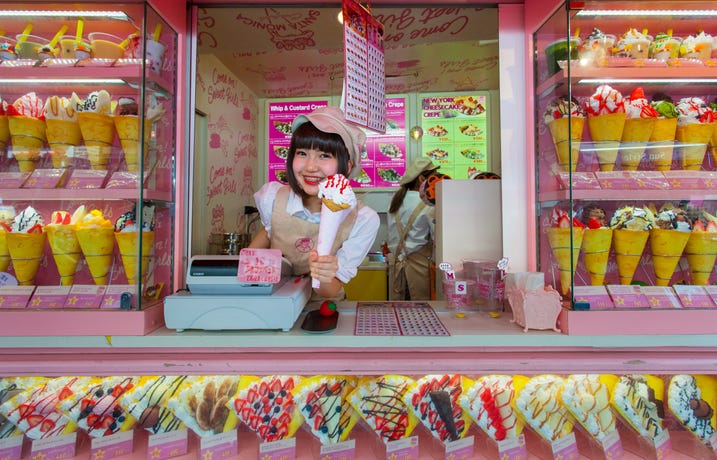
Restaurant: Ushigoro
Address: 〒106-0031 Tokyo, Minato City, Nishiazabu, 2 Chome−24−14, Barbizon 73, B1F
Date: Wednesday, 8 March
Time: Evening
No. of persons: 2
Booked by Clients.
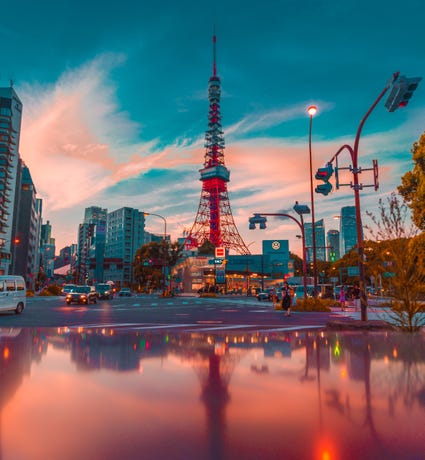
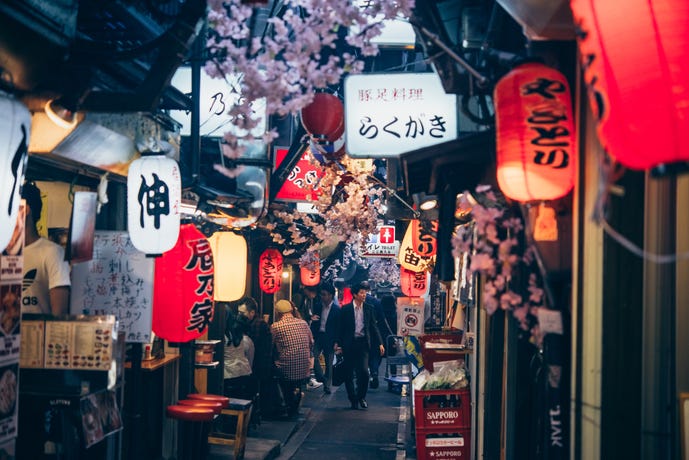
Meet your guide, a guide, in the lobby of the hotel in the morning and set out for a private guided tour.
This is a full day tour.
Booked by scenset.
Today you will tour using a combination of trains, buses, and taxis.

Even though the tuna auction and some of the inner markets shops have moved to the new Toyosu Market, Tsukiji Market still remains vibrant and a place not to be missed. While the inner market has many shops that sell business to business, the outer market in Tsukiji is a wonderful chance to sample a wide variety of some of Japan's finest seafood and various fresh, hot snacks.
Your brief tour today will take you to the outer market to experience some of Tsukiji’s best eating (and drinking). We recommend the yaki-tamago - a sweet, custard like scrambled egg pan fried in layers and served fresh out of the pan.
(food is included in your outer market tour!)

Asakusa is home to one of Tokyo’s most famous gates – Kaminari-mon. As you make your way through the many shopping stalls, you’ll eventually come to Senso-ji, Tokyo’s oldest temple. It is here that visitors can enjoy a striking contrast of ancient and modern Japan – Tokyo’s oldest temple, built in 645AD, with the world’s tallest free-standing tower, Tokyo Skytree, as a backdrop.
Sensōji Temple is the oldest temple in Tokyo, having been built in 645AD.
Unfortunately, after remaining relatively unscathed for 13 centuries, it was destroyed during WWII. Sensoji was rebuilt after the war and has become a symbol of rebirth of the city and the nation.
Nowadays, millions of people step through the Kaminarimon or Thunder Gate, famous for its huge lantern, and stroll along Nakamisedori, the street leading to the temple, filled with small shops selling all manners of goods.
Yanaka, a tour of Tokyo's old foodie section. You can still see many old houses, walk through a shopping street where locals buy their dinner from each specialized store, not from a large supermarket. The atmosphere is clearly different from the modern side of Tokyo, giving you a feeling like you've time-traveled back to the good old days. We end the tour with drinks and food at an 80-year-old renovated Japanese house. Many fun local food samplings are included.
The Namidabashi Oshimaya Lantern Shop, established in 1913, is a well-known lantern shop that has been making Edo-style hand-painted lanterns for over a century.
Edo-style hand-painted lanterns are a traditional handcraft of Tokyo with characters and family crests from the Edo Period hand painted on the main part of the lantern. The characters are clearly and boldly so that they are easily legible from a distance.
The shop also hand paints oil-paper umbrellas, as well as props for Kabuki performances.
Meet your sake expert in the hotel lobby in the evening and spend a couple of hours learning about sake, from the type of rice used to make it to the various flavors and food pairings possible.
This experience includes light snacks to accompany the sake and will take place at Seigetsu Kagurazaka.
Booked by scenset.


Please refer to the information provided about the Takkyubin Luggage Service above. If this is something you wish to do, it's important that you speak with your hotel concierge in good time.
You will meet your assistant in the lobby of your hotel in the morning who will walk with you to Tokyo Station. It's about 12 minutes on foot. Should you wish to take a taxi it will be on your own account.
Booked by scenset.
Most transfers will be via train. In this scenset, one assistant would put you on the train in one location, and another would be waiting for you on the platform upon arrival. It's such an efficient system that we'll know exactly where you're sitting, and which doors you will exit. For any other vehicle transfers, these would be by private vehicle and driver. You wouldn't be responsible for any driving on this journey.
Tokyo-Shin Osaka (Morning)
Booked by scenset.

In Osaka, you will be met by an assistant as you disembark, who will be holding a signboard on the platform and will accompany you on your private transfer to Conrad Osaka, which is about 15 minutes away.
Booked by scenset.

The historical commercial capital of Japan, Osaka is Japan’s third largest metropolis and it has been the economic powerhouse of the Kansai region for centuries. Osaka first gained prominence when a powerful warlord built the country’s most magnificent castle in the 16th century. To develop resources for his castle town, the ruler persuaded merchants from other parts of the nation to resettle in Osaka and it became an important distribution center. As the merchant class prospered, the town grew and traditional arts such as kabuki and bunraku flourished. With the legacy of the city’s commercial beginnings still intact, Osaka is renowned as a hub for international business. It is also famous for its local cuisine, large aquarium, underground shopping arcade, and its popular Universal Studios amusement park.
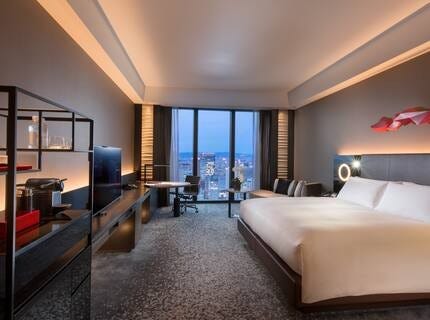
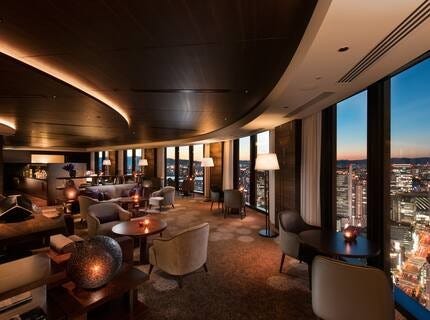
Welcome to Conrad Osaka, your 'address in the sky.' With a commanding presence on Nakanoshima between the Dojima and Tosabori rivers, this sleek luxury hotel offers incredible views of the water and Osaka from all guest rooms and public areas.
Connect easily with West Japan's largest city - walk to shops and offices in Umeda, and immerse in local food and culture in Namba. The Conrad team enriches your stay with intuitive, tailored service.
Conrad Osaka
Premium View Room
- Breakfast included
At this time, you have a knife workshop at Wada.
Time: Afternoon
Participants: 2
Knife① : Sashimi knife (Stainless)
Letters①: will be provided
Knife② : Sashimi knife (Carbon)
Letters②: will be provided
Meeting Location Wada Store, 1 Chome-1-1 Shinmeichohigashi, Sakai Ward, Sakai, Osaka 590-0935, Japan (〒590-0935 大阪府堺市堺区神明町東1-1-1)
Inclusions:
- English guide
- Sharpen knives experience
- Fitting handle experience
- Your knife with your favorite letters on the blade
Booked by scenset and to be paid directly

Meet your food expert in the hotel lobby in the evening for an evening food tour of Osaka.
Osaka is one of Asia's ultimate food destinations: stroll along the never-ending food stalls streets and tunnels to enjoy the huge variety of traditional dishes as well as the city street food culture atmosphere - it will add a unique memory of your trip.
The heart of the food in Osaka is Dotonbori. Symbolized by the running Glico Man neon sign, there are no shortages of small pubs, restaurants, bars, and shops in this area. Make sure you also check out the famous giant crab!
Booked by scenset.
Today is yours to explore Osaka at your leisure. Below you will find some suggested sites to explore.

Originally built in 1583 by a prominent historical figure, Osaka Castle was once destined to be the center of a unified Japan. Unfortunately, the castle suffered the exact opposite fate as it was destroyed in 1615. It was rebuilt shortly after, only to be struck by lightning in 1665 and burned down once again.
It wasn't until 1931, just shortly before World War II, that the castle was rebuilt using more modern technology/materials. The castle was spared destruction during the war and has been one of Osaka's main attractions since its reconstruction.
The castle grounds provide plenty of green space for visitors and during cherry blossom seasons a perfect place for picnics.

Umeda Sky Building consists of two tours joined by an observatory on the 39th floor. This futuristic building is a fantastic way to observe Japan's second largest city.
Meet your guide, a guide, in the lobby of the hotel in the morning and set out for a private guided tour.
Tour in the comfort of your own private luxury minivan (Toyota Alphard).
Booked by scenset.

Nara was the capital of Japan for about 100 years prior to the capital being moved to Kyoto. Like Kyoto, the city is filled with historical landmarks and must-see items. One of the city’s most beloved attractions are its deer. Roaming the streets freely in search of “shika-senbei” (deer crackers), these timid creatures were once considered sacred messengers of the gods.

One of Nara's (and Japan’s) most incredible landmarks is Todaiji, which houses the largest bronze Buddha statue in the world. Construction of the temple began in the 8th century, a time of heightened instability in Japan. As with many structures in Japan, the temple has suffered from extensive fire damage/destruction in its history, and the current structure today is the second largest entirely wooden building in the world.
Naramachi is the old merchant district of the city. There are many traditional residential buildings and warehouses that have been preserved and are open to the public. A wide variety of boutiques, shops, cafes, restaurants and museums are scattered throughout the district's narrow streets. It gives a wonderful feeling of old Japan. The area is also known for the World Heritage Site of Gangoji Temple. The temple was originally founded nearby, but was moved to Nara in the early 8th century.
There is a small sake brewery where visitors can sample the goods and a small traditional toy museum that can be enjoyed by people of all ages.

Within the city is Kasuga Shrine – a temple with a history as old as Nara city itself. Although the site Kasuga Shrine was built on is old, the buildings themselves were rebuilt on a periodic basis throughout history. The shrine is surrounded by an old-growth forest that has remained relatively undisturbed throughout the ages.
Kyoto is the nation’s former capital and was the residence of the emperor from 794 until 1868. With 2,000 religious buildings, including 1,600 Buddhist temples and 400 Shinto shrines, as well as palaces, gardens, and associated architecture, it is one of the best-preserved cities in Japan and has 17 UNESCO World Heritage sites. Kyoto represents the “Japan of old” and beyond the high-rise skyscrapers built as a monument to progress, the real monument to Japan’s historical and cultural past can be found in the city’s narrow alleyways where tea houses abound and kimono-clad geisha hurry around.

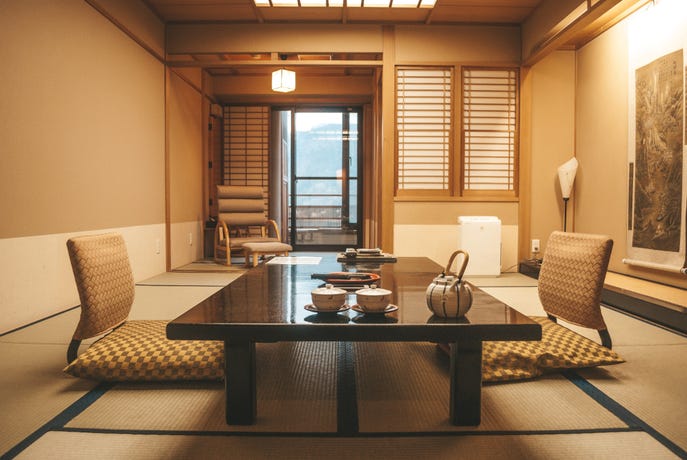
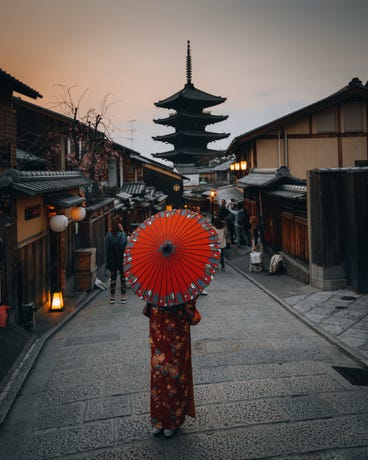
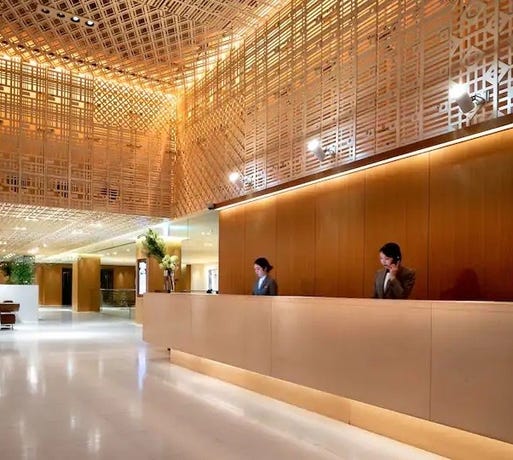
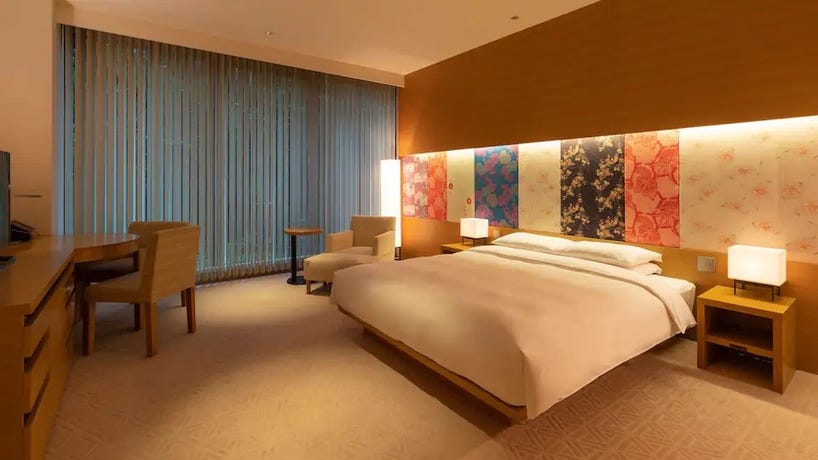
A lush grove of bamboo marks the entrance to Hyatt Regency Kyoto in Higashiyama Shichijo, a leafy district suffused with the elegance of the old capital. The team of expert concierges carefully curates tours and programs that offer insight into Japanese culture, meeting the needs of business and leisure travelers alike.
Hyatt Regency
Deluxe Room
- Breakfast included
In a city where hotel pricing has become eye-wateringly high, Hyatt Regency continues to offer great value. Just 7 years ago this property was the only game in town. However in a testament to the popularity of Kyoto, the market is now saturated with big players such as Ritz Carlton, Four Seasons, Park Hyatt, and an abundance of boutique properties.
Is Hyatt Regency still the best hotel in town? No. But it's not possible to find anything comparable at this price point, the location is excellent, and the service is everything you'd expect from a property which has been welcoming international visitors for 17 years.
Meet your guide, a guide, in the lobby of the hotel in the morning and set out for a private guided tour.
Tour in the comfort of your own private luxury minivan (Toyota Alphard).
Booked by scenset.

The Way of Tea or Japanese Tea Ceremony comes hand in hand with Zen.
Let us walk you through the quiet grounds of Daitokuji Temple, where historical Tea Masters practiced this living Art under Buddhist monks. After the walk, you are invited to a tea practitioner’s house for a simple bowl of Matcha (powdered green tea). The traditional townhouse has a charming atmosphere which will further evoke discussions on how the style of Zen and taste of Tea are one.

Next, stop by a karesansui – also known as a rock garden.
Perhaps one of Japan’s most famous rock gardens is the one found at Ryoan-ji. While other rock gardens have clearly defined meanings, those who view Ryoan-ji are left to figure out what the layout of the rocks means.
What meaning will you find in this carefully laid out garden?

Kinkakuji, or the Golden Pavilion, is one of Japan’s iconic sites. The temple grounds first began as a small villa in 1224 and was converted to a Zen temple shortly after. Like so many other historical landmarks in Japan, the temple has unfortunately suffered destruction from fires in its history. The building, as it stands today, is a historically accurate reconstruction of the temple before it burned down from arson in 1950.

Known for its nightingale floors that chirp with every step, the castle provides a stunning example of architecture and interior decorations. After exploring inside the castle, enjoy a stroll around the castle grounds with its beautiful gardens.

Restaurant: Tempura Yasaka Endo
Date: Monday, 13 March
Time: Evening
No. of persons: 2
Seat type: Counter seating
Course menu: Rokuhara course, Yasaka course (details will be provided). No mushrooms for one person (Rokuhara course).
Booked through the hotel concierge.

Kyoto is a city rich in history and vast in size. To discover all it has to offer would take years, if not decades.
One of the best ways to discover as much as possible as quickly as possible is to hop on a bike and get lost on its side streets and alleyways.
Your tour today will take you to some of the city's most iconic and photogenic locations at a leisurely pace.
Meet your guide in the hotel lobby in the morning - they will be holding a sign.
After this cycling tour, if you need a taxi to go anywhere, the team will be able to assist in arranging it.
Duration: 3 hours
Booked by scenset.

Cooking Sun is a cooking school founded in 2014 with the idea of spreading the love of Japanese food around the world. The staff of school is populated with highly-skilled locals and affords the chance to bring home skills learned during the class.
Meet at the Cooking Sun Machiya Studio (Funayacho 679, Shimogyo-ku, Kyoto) at in the afternoon. It is an 8 minute drive from your hotel, or a pleasant 35 minute walk. The class is approximately 2-3 hours long.
Please try to be there on time; if you will be late, please contact them.
Phone number: will be provided
Booked by scenset.
Today is yours to explore Kyoto at your leisure. Below you will find some suggested sites to explore.
Arashiyama is one of Kyoto’s most beloved spots. It has a famous and storied wooden bridge (Togetsukyo Bridge), numerous temples known for their statuary and gardens, a scenic bamboo grove that is great for a stroll, and picturesque streets that complement each other to make a pleasant atmosphere excellent for leisurely walks.

While many religious sites have a somber tone, Otagi Nenbutsu-ji is a fun twist on the Japanese temple experience. Here you'll find well over 1,000 small stone statues, called rakan, often depicting humorous and lighthearted disciples of the Buddha.

Much of this street along the way from the Otaji Nenbutsuji Temple has been preserved in the style of the Meiji Period (1868-1912). Many of the buildings are traditional machiya that were once private residences but have been changed into shops and restaurants.
Jojakkoji Temple: Founded in 1596, this mountainside temple is filled with small, attractive buildings, gates and a quiet atmosphere. Its many maple trees and moss are located next to the paths and stairs all around the grounds.
Nisonin Temple: Slightly larger and more imposing than Jojakkoji, Nisonin Temple is another hillside temple. The reflective atmosphere of the grounds are enhanced by the trees that create an almost tunnel-like entrance to the temple. It was founded in the 1000s and offers excellent views of Kyoto.
Gioji Temple: More off the road and hidden into the hills, Gioji Temple is a personal favorite. Its moss garden offers a great alternative to the more famous Kokedera and is usually less crowded and thus more peaceful. Many of the temple buildings still have thatched roofs, contributing to a feeling of times gone by.

With a history dating back nearly 700 years, Tenryuji is one of Arashiyama's most visited sites, and for good reason. While the building complex has suffered from fire damage throughout history (like much of Japan), the stunning gardens remain in their scenset form. As you stroll through the garden, both from within the temple and on the garden paths, you'll move from the pond, which symbolizes a large lake, up the mountain and into the forest (where multiple cherry trees can be found). As you exit the temple, you'll come to the famous bamboo forest.

Tour the city's ramen district and experience the food that has taken over the world. Meet your guide, a local expert, in the lobby of your hotel in the early evening.
Booked by scenset.


Meet your driver in the lobby of your hotel at midday and move to the station by private vehicle. Your driver will assist you in boarding your train.
Booked by scenset.
Kyoto-Nagoya (afternoon)
Booked by scenset.
Meet your driver upon your arrival and move to your hotel by private vehicle.
Booked by scenset.
This coastal city located in Mie Prefecture is surrounded by natural beauty and untouched Pacific coastline. As well as ancient shrines, this region is full of traditions, including the famous Ama pearl divers.

Located near Ago Bay, this modern onsen-like resort brings guests into an area of calming peace. Relax in mineral waters of the hot springs, follow the paths of ancient pilgrim trails and investigate the culture of this wonderful coast.
Amanemu
Sora Suite
- Breakfast included
Either head out for a day of independent exploration, or simply relax and enjoy the facilities at this incredible resort.

Spend the day at leisure, relaxing at your resort.

This evening you will enjoy a special Hako Dinner, which will be served in your suite. The menu consistently evolves to utilize the freshest seasonal ingredients.
Time: Please choose from the following times - early evening / early evening / early evening.
Note: Please let us know in advance if there are any allergy or dietary requirements.
Booked by scenset. Clients to pay directly to the hotel.

Meet your driver in the lobby of your hotel in the morning and move to the station by private vehicle. Your driver will assist you in boarding your train.
Booked by scenset.
Nagoya-Tokyo (afternoon)
Booked by scenset.
As you disembark the train you will be met by your assistant, who will walk with you to the Mandarin Oriental. Should you wish to take a taxi, it will be at your own expense.
Booked by scenset.


Mandarin Oriental
Deluxe Room
- Breakfast included
Meet your driver in the lobby of your hotel in the afternoon and move to Narita Airport. It is about a 90 minute drive.
Booked by scenset.
Thank you for traveling with us.
We hope that we were able to help you build lasting memories of your time in the Land of the Rising Sun.

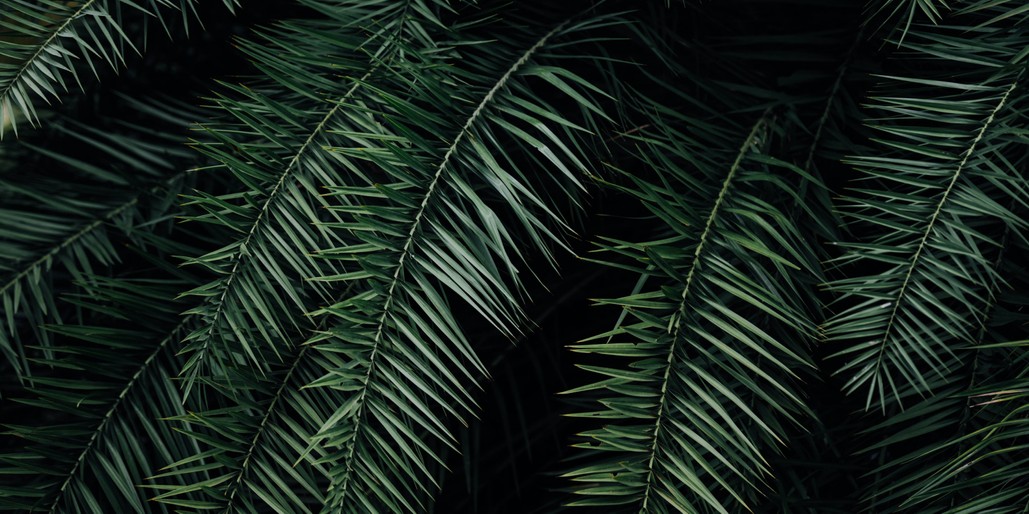
Scenset invests in making the world a better place. Scenset will offset the fuel used during the trip. On top of that, an extra 10% will be offset to make your trip a carbon-positive experience.
Currently, we support Gold Standard Climate+ Projects from the Gold Standard Foundation.
Please refer to our terms & conditions here.